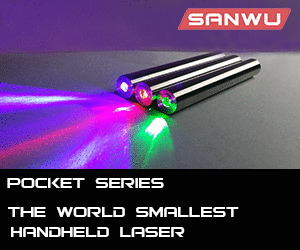We had problems in this shop (AwesomeLasers.com) soldering to the MicroBoost as well - you are not the only one... and we use only the best quality equipment and solder.
What we found upon close examination with a high-power loupe is that the solder mask on the board - the green stuff that is usually used to prevent solder from "leaking off" the pad when you solder - has been replaced on this board with a clear laquer-like substance. We used 20% silver solder and STILL could not get the connections to "stick". What we ended up doing was to ultrasonically clean the boards in a bath of GUMOUT (yeah, the stuff you get at Pep Boys or Sears Auto Shop). After a 2-minute soaking in vibrating GUMOUT, wash the board with ISOPROPYL ALCOHOL - DO NOT USE ACETONE or KEYTONE-Based solvents or you will release the smoke from the regulator chips.
If you take reasonable ESD precautions (like grounding the metal ultrasonic can to the ground pin on the AC outlet - if your US cleaner is one of those with a 2-prong plug), bathing an unpowered driver (or anything - even an entire PC) will not harm it, as long as it is THOROUGHLLY DRY when you power it up.
When this is done, all the clear crap that you can't see - even with a magnifier - is washed away. Leave the board at room temperature for a day or two to make sure all the moisture and alcohol has evaporated. You will now be able to solder to the board without a problem.
For those of you who do not have SMT soldering equipment, you can use a straight pin held in an exacto-knife handle to apply CONDUCTIVE SILVER PAINT to form the connections. The stuff is readily available on:
Silver Paint, 18% Silver, 15 gram brush-cap bottle
This conductive paint is used to repair open land patterns on PC boards. We used to use it all the time when I worked for IBM. You can also use the paint to decrease the resistance of metal-to-metal friction connections such as the tailcap switch tab on flashlight hosts, and to reduce the resistance of any (non-moving) connection such as is found between threaded parts of a flashlight host, and the (other) friction connection from the battery pill to the host body.
The best part about using the silver paint is that it is HEATLESS. You won't have to worry about de-soldering those small resistors when you are NOT soldering to the board (except for the in / out connections).
It is our opinion that the designer of these boards (Dr. Lava et. al.) have made these boards too small. Soldering pads to SMT parts that have been soldered on the board by ROBOTS is just BAD DESIGN... but what is the alternative?
These boards are also prone to overheating, and are TERRIBLE to work with. Using the conductive "paint" makes it a whole lot easier, and we have taken to using it, letting it dry overnight, and THEN soldering the connections.
Awesome Lasers is re-designing an entirely new generation of micro-drive boards specifically tailored for high-power 445nm diodes. Our R&D began on November 2, 2010, and we will have "proof of concept" boards in 1 to 2 weeks. OUR boards will be able to deliver 2,000mA into a 1 Ohm load, powered by a "protected" 18650 2,500mA battery. Another version of this board will suppy 3,000mA into a 1 Ohm load in high frequency "pulse" mode, and use a specially-made battery pack with an extremely high current capacity and very low internal resistance.
The boards will be fixed output (no more turning pots that you can't find a screwdriver to fit), constant current devices. The latter version is being developed for a large rifle manufacturer which is supplying weapons to the US Military, and will probably NOT be offered for sale to the public.






